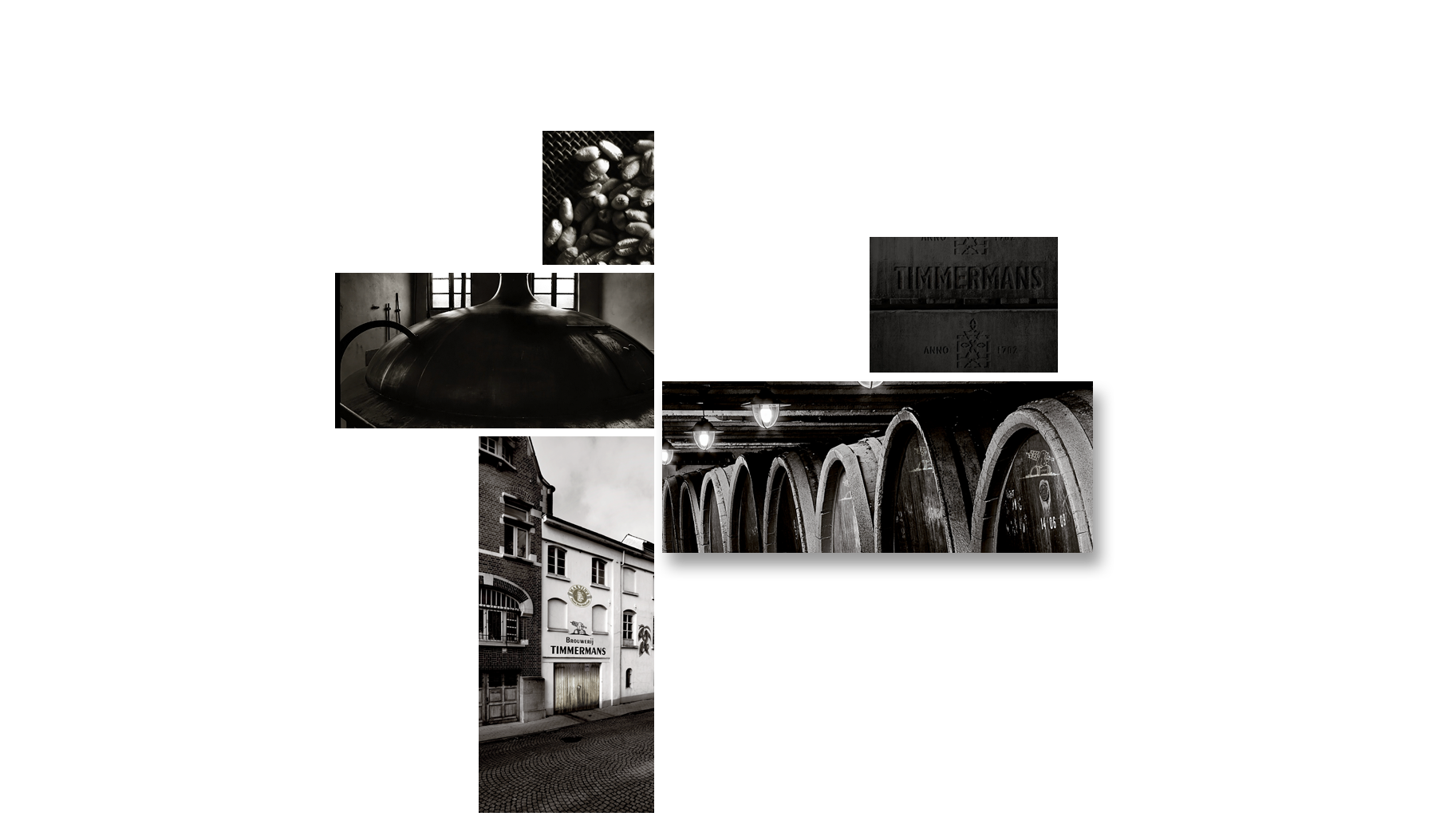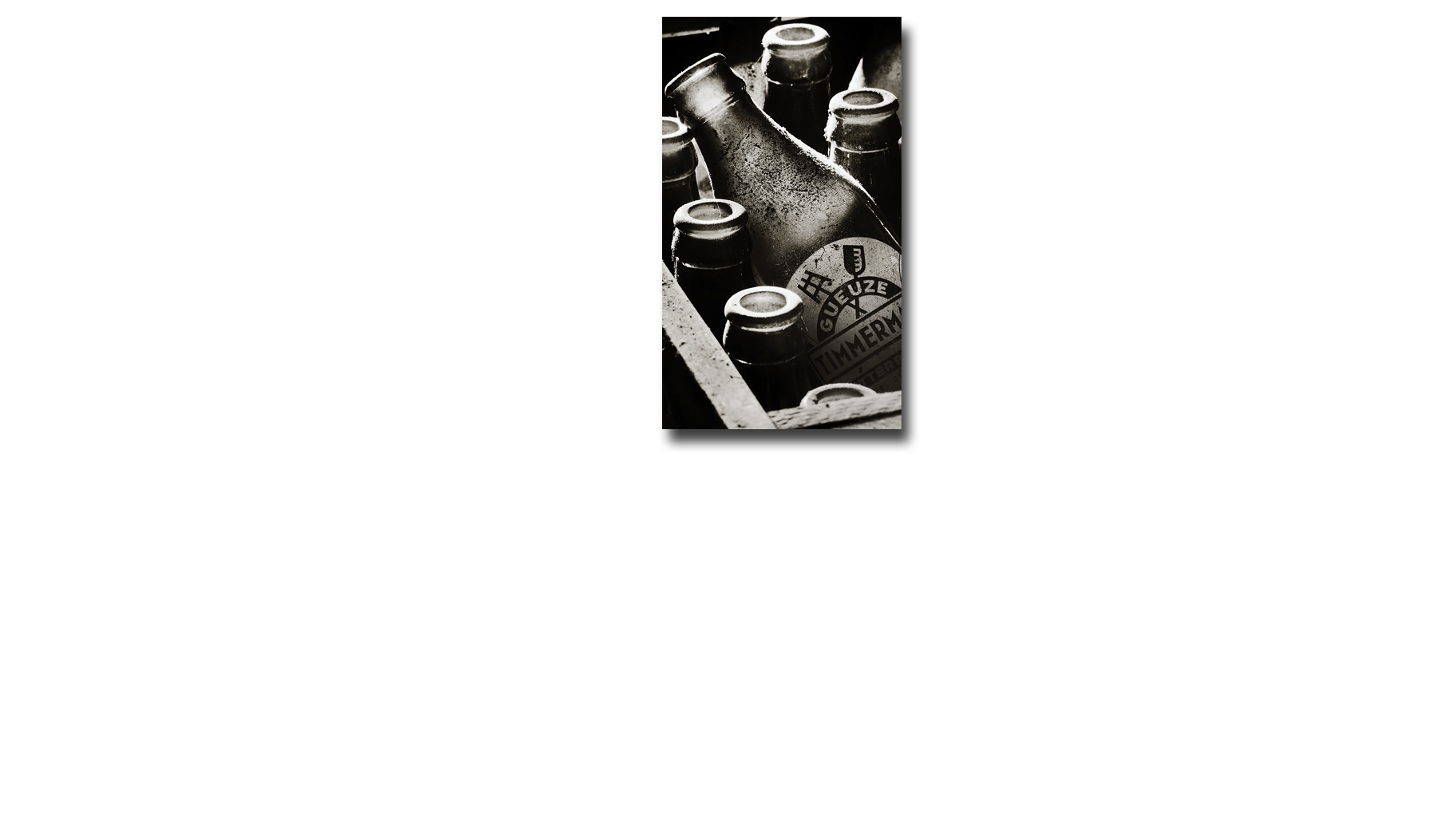

Brewery


TIMMERMANS
Once upon a time, it seemed like everyone brewed beer in Belgium.
Professional brewers shared their knowledge with private individuals whose brewing installation was located in their living room, with farmers who had their hands brew on quiet days and with abbeys who claimed their brews had medicinal properties. Depending on their region, brewers used different ingredients in varying quantities, which explains why so many regional beers emerged.
Timmermans has brewed lambic in Itterbeek for the last 300 years, ever since 1702. A few miles from the centre of Brussels, it was then known as “The Mole Brewery”. Owned by Jan Vandermeulen, it was also a farm, an orchard, a café and a malt-house.




OUR HISTORY
De Mol brewery
In May of the year 1814, the municipal treasurer took note of a statement that Jacobus Walravens had lit the fire under his brew kettles four times. These brew kettles had a content of 15 hectoliters. The small brewery called “De Mol” was housed in a thatched stone building. The brewery had two brew kettles, two vats and a cooling vessel. It produced three or four batches of small beer a year. Small beer is beer that contains very little alcohol and that was historically produced for everyday consumption. The four 1500 litre batches that were brewed a year were intended to cover the needs of the relay.
Family business
A deed drawn up by notary public Jean Baptiste Van den Eeckhoudt in St Kwintens Lennik on 9 June 1832 states that the farm called “Het Molleke”, located within the municipality of Itterbeek, with associated brewing equipment, belonged to the widow Anna Catherina Verheylewegen.
Lambic, Faro and Meerts
Lambic, Faro and Meerts from the Walravens brewery were mentioned in 1866 in the official record of a public auction held in Brussels. Large quantities of this beer were stored in the cellars of innkeeper Michel Van Begin who died in December 1866. It was clear that the Walravens brewery was actively expanding its market beyond Itterbeek.
Allambique
Commercial documents dating from the 16th and 17th century indicate that the Near East was an important market for Belgian artisanal beers. The commercial attaché from Constantinople ordered 200 bottles of Gueuze-Lambic from a Brussels brewery. They were shipped to Sultan Abdul Medjid in Constantinople.
Major changes
A major change took place when Paul Walravens’ youngest daughter, Celina, married a brewer’s son from Zuun called Frans Timmermans in 1911. The farm and orchard were discontinued and the couple put all their energy into the brewery. This meant that they had to buy their sour cherries from that point forward. They had previously used the produce of their own orchards to brew fruit beers. As far as I know, there is a small brewery which continues to make Kriek beer with their own produce. However, if the cherry harvest is poor, they can produce no or very little Kriek beer.
Finest Beer Selection
Timmermans Brewery has been part of the John Martin group since 1993. Today, Timmermans beers, winners of prestigious prizes, are found all over the world and form a crucial part of the Martin’s Finest Beer Selection.


THE LAMBIC
Lambic has been known since the 13th century and continues to be brewed exclusively in the Zenne valley, particularly in the Brussels area.
It is the only beer type with a registered designation of origin (pursuant to the Belgian Royal Decree of 20 May 1965) and must be brewed in accordance with legal standards.
Lambic is prepared with 70% malt, 30% wheat and aged hops.
From its very beginnings, Lambic has been produced by means of spontaneous fermentation, i.e. by bringing the wort into contact with the wild yeasts present in the air.
Lambic acquires its specific flavour through the cereals used in the brewing process (wheat and barley) as well as the microorganisms present in the Zenne valley (including Brettanomyces lambicus and Brettanomyces bruxellensis) which bring about fermentation.
This explains why good Lambic can only be brewed within a 15 km radius of the city centre.
Approximately 300 Lambic breweries existed around 1900. Now, only about 10 traditional Lambic breweries are left.





